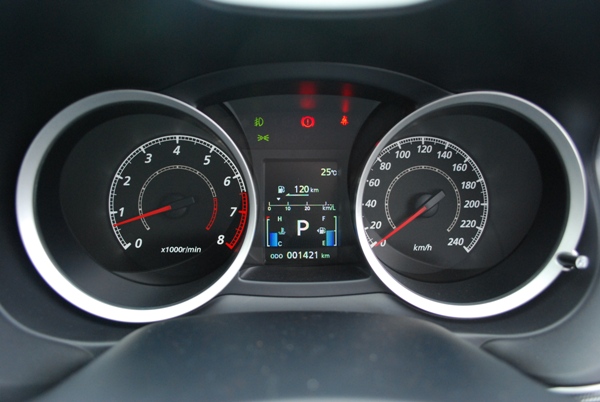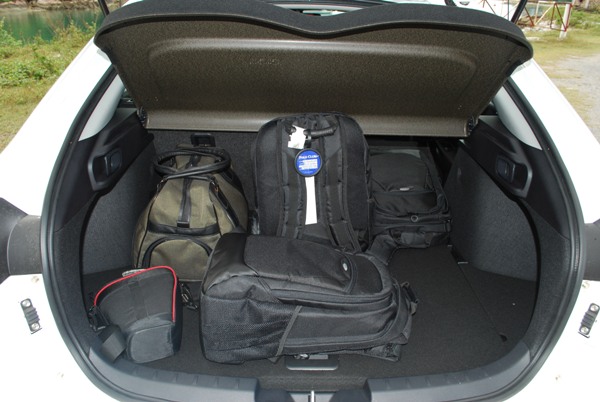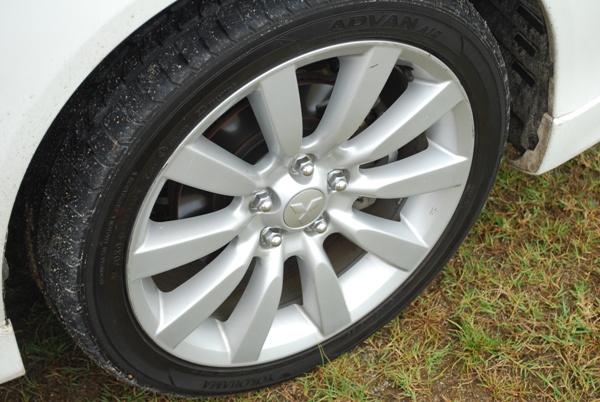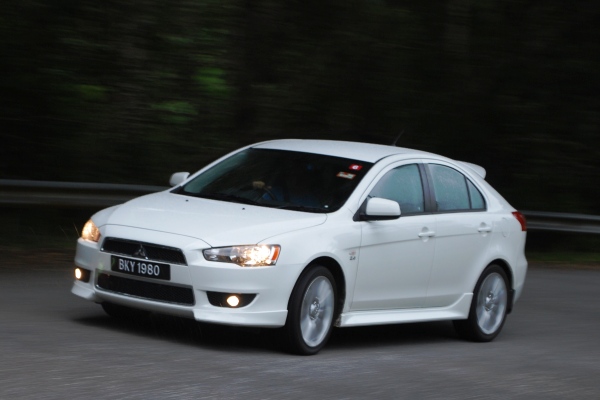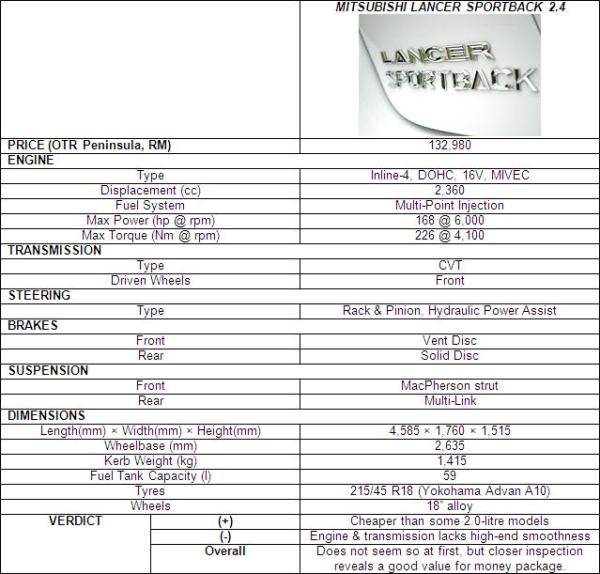Mitsubishi Lancer Sportback 2.4 – Stepping-up a rung
Proton’s recent introduction of the Inspira has drawn some flak directed not only to themselves, but also to Mitsubishi as well for ‘betraying’ their legion of Lancer owners. The situation is somewhat reminiscent to how the RM98k Naza Ria completely left those who bought the Kia Carnival at RM160k in a limbo.
Things are slightly different with the Inspira for two reasons, with the first of them being Proton putting in its own R&D contribution in reworking the Lancer’s ride and handling. Secondly, even in the face of a RM95k alternative, Mitsubishi Motors Malaysia (MMM) will still offer CBU versions of the Lancer as before at unchanged prices.
Of course selling the Lancer would not be much of a problem if the Inspira only had 1.8-litre versions. Giving Proton the 2.0-litre model as well was quite a curveball thrown at MMM by its Japanese principals. For the Lancer and Inspira to co-exist in one market, Mitsubishi’s only option is to push the Lancer up the food chain, and this is where the Lancer Sportback 2.4 comes in.
What’s on offer?
To recap, Mitsubishi currently offers the Lancer sedan in two trim levels – 2.0 EX at RM120,980 and 2.0 GT at RM123,980, both inclusive of insurance. Stunning good looks and decent driving dynamics have seen the Lancer build up a legion of fans, and the model steadily rakes in about 150 sales a month.
The Lancer Sportback enters our market with the 2.4-litre all-aluminium 4B12 engine with twin-camshafts and MIVEC. An upsized version of the 4B11 powering the Lancer 2.0, the bigger engine displaces 2,360cc and Mitsubishi charges you an extra RM9,000 on top of the Lancer GT for the privilege of those extra 400 cubes.
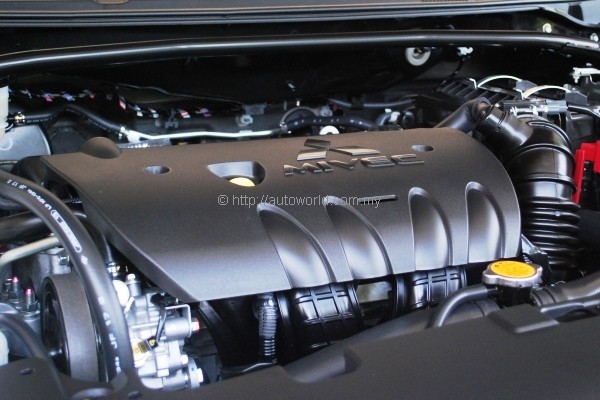 |
| The only 2.4-litre engine in the C-segment. |
That extra money buys you 168hp and 226Nm, produced at 6,000rpm and 4,100rpm respectively. The numbers hold up to comparison against 2.4-litre engines from Honda and Toyota, but fall somewhat short of its Hyundai relative, the Theta-II with Dual CVVT found in the Sonata and Tucson.
Including insurance, the Sportback’s price adds up to RM132,980. To fully comprehend the worthiness of this offer, you will need to consider the fact that this car, with a 2.4-litre engine, asks for an extra RM990 over the Toyota Corolla 2.0 and RM2,000 more than the Honda Civic 2.0. Indeed, Mazda’s almost-RM140k price tag for the Mazda3 2.0 hatchback suddenly seems very ambitious.
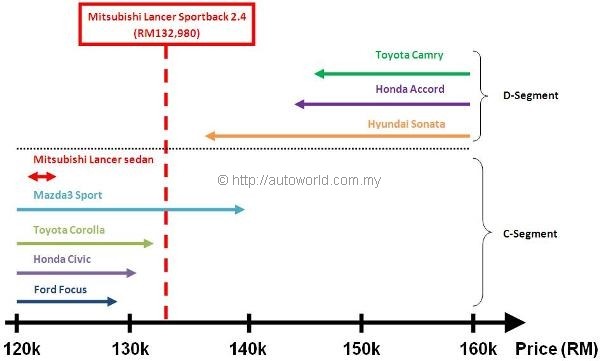 |
In recent press briefings, Proton has been trying to sell us the idea that the Inspira is a model that straddles the boundary between the upper C-segment and lower D-segment. We can’t help but feel that this description would be more apt for the Lancer Sportback, an argument backed by its 2.4-litre motor. In fact, with the Inspira set to enter the market, Mitsubishi might want to consider plonking this engine into the sedan as well.
Like the Lancer sedan, Mitsubishi has loaded the Sportback with excellent levels of equipment. Safety is taken care of by Active Stability Control with Traction Control (ASC+T), ABS, and EBD. Front passengers get the benefit of an airbag and a pre-tensioned seatbelt each. The more flashy stuff includes auto lights, auto wipers, cruise control, aluminium pedals, Nappa leather, and a 2-DIN LCD touch-screen.
Looks
If you are familiar with the Lancer sedan’s styling, the forward half of the Sportback requires no introduction. Curiously for this new top-of-the-line and not to mention sporty model, Mitsubishi has opted to finish it with the front bumper taken from the cheaper EX model rather than the fiercer-looking unit from the GT.
Tyre and wheel combo however, is taken from the GT, and while that promises greater driving dynamics and is more pleasing to the eye, trips to the tyre shop are set to be eye-watering experiences when those 215/45 R18 Yokohama Advan A10 tyres require swapping.
The rear half is completely reworked from the sedan, and if you ask me, the proportions somehow do not appear right. Just like how the Ford Fiesta and Mazda2 made awkward transitions from hatch to sedan, the reverse path proved equally difficult to traverse for the Lancer. It also seemed, to my eyes at least, that the rear end was penned very independently from the front; the front and rear design language do not possess the same cohesion like the sedan’s.
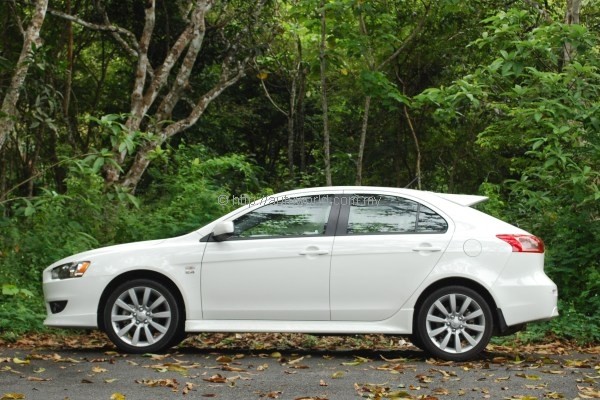 |
| Proportions somehow do not appear right. |
Interior
Differences between the Sportback’s interior and the sedan’s are minor if any, and the only notable deviation worth reporting is an impressive-looking colour liquid crystal trip computer display replacing the mono-chromatic unit found in the sedan.
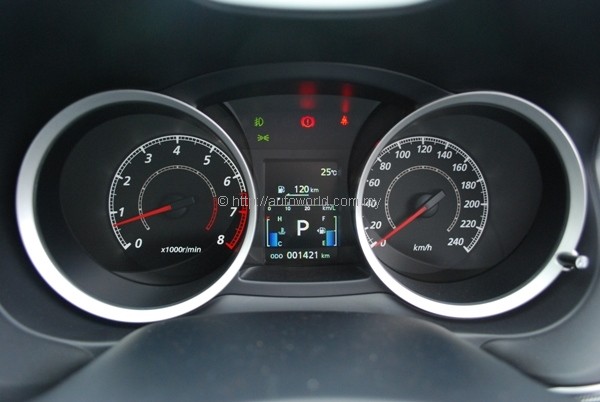 |
| Instrument cluster features colour LCD display |
Build quality is satisfactory, and I recall that early units of the Lancer sedan felt very poorly put together inside. Rear headroom is also compromised somewhat, thanks to its lowered roofline and presumably space taken up by its tailgate hinges.
That high-opening tailgate, however, opens up to some pretty generous luggage space. Either side of the luggage area are convenience levers which allow for one-touch folding down of the 60:40 split rear seat backs. You don’t get flat-floor folding, but you still have some pretty decent cargo room to exploit when needed.
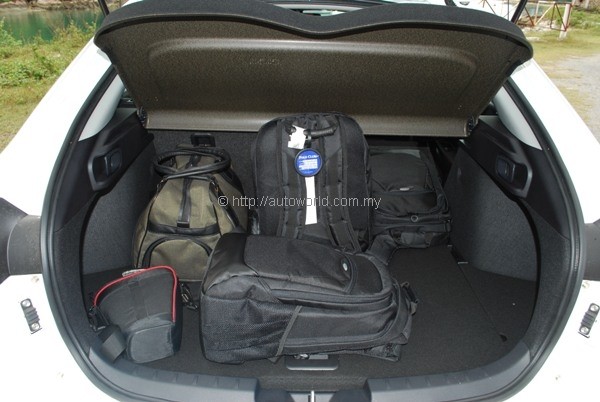 |
| Cargo room is good, and one-touch folding operation is useful. |
Driving Experience
If you recall from our story on the ASX, Mitsubishi let us loose around Langkawi in both the ASX and the Lancer Sportback in a media test drive. The timing of the drive was also very fortunate, being held in the same week as the Proton Inspira media drive. As our drive time with the Lancer sedan was quite a while back, sensations from the Inspira drive proved to be useful points of references.
 |
| Alongside the ASX |
When we tested the Inspira, Proton’s chassis engineers noted that Mitsubishi gave them an excellent platform for them to start their work, and we couldn’t disagree. My driving leg of the Lancer Sportback was along some twisty roads which scales Gunung Raya, Langkawi’s highest peak. The road offered a good mix of corners with some wretched surfaces thrown in for good measure.
As with the sedan, keen drivers will appreciate the Sportback’s dynamics, though the driving experience of a CVT will not be to everyone’s taste. Providing six virtual ratios help re-inject the car with a sporty flavour somewhat, and you’ll need to flick those paddles if you’re in the mood for some fun. Our trip up and down Gunung Raya was negotiated almost exclusively with the 2nd and 3rd virtual ratios.
The engine has more than enough grunt to move the Sportback’s 1,415kg frame along at pace. It is a willing-revver, but not a very smooth one. It loses quite a bit of refinement at the top end, and this characteristic is also experienced on the Lancer sedan, ASX, Inspira, and even Hyundai models running on the Theta-II engines.
Sitting on 45 series tyres naturally means a compromise in outright comfort, although you will not have brace for a bone-shaking ride by any means. The Sportback tackled most bends with confidence, but if you push it at areas where the surface is less than ideal, summoning the traction control into action is a lot easier than you think.
 |
| Driving dynamics remain just as engaging. |
Verdict
In our initial reckoning, the Lancer Sportback seemed pretty much like a silly idea and appears to be an all too desperate move to differentiate the Lancer from the Inspira. The latter notion may still hold true, but after examining the overall package, we now happily remove the ‘silly’ tag.
Its awkward styling will take some getting used to, but putting a 2.4-litre engine into the C-segment was a very bold decision, and our hats are certainly off to Mitsubishi for that. The Lancer has a very capable chassis, and extra horses under the hood certainly does not hurt.
Think of it this way, with all the Inspiras set to flood the roads in the months to come, the Sportback is the one to go for if your mind is still set on the original Mitsubishi Lancer.
 |











